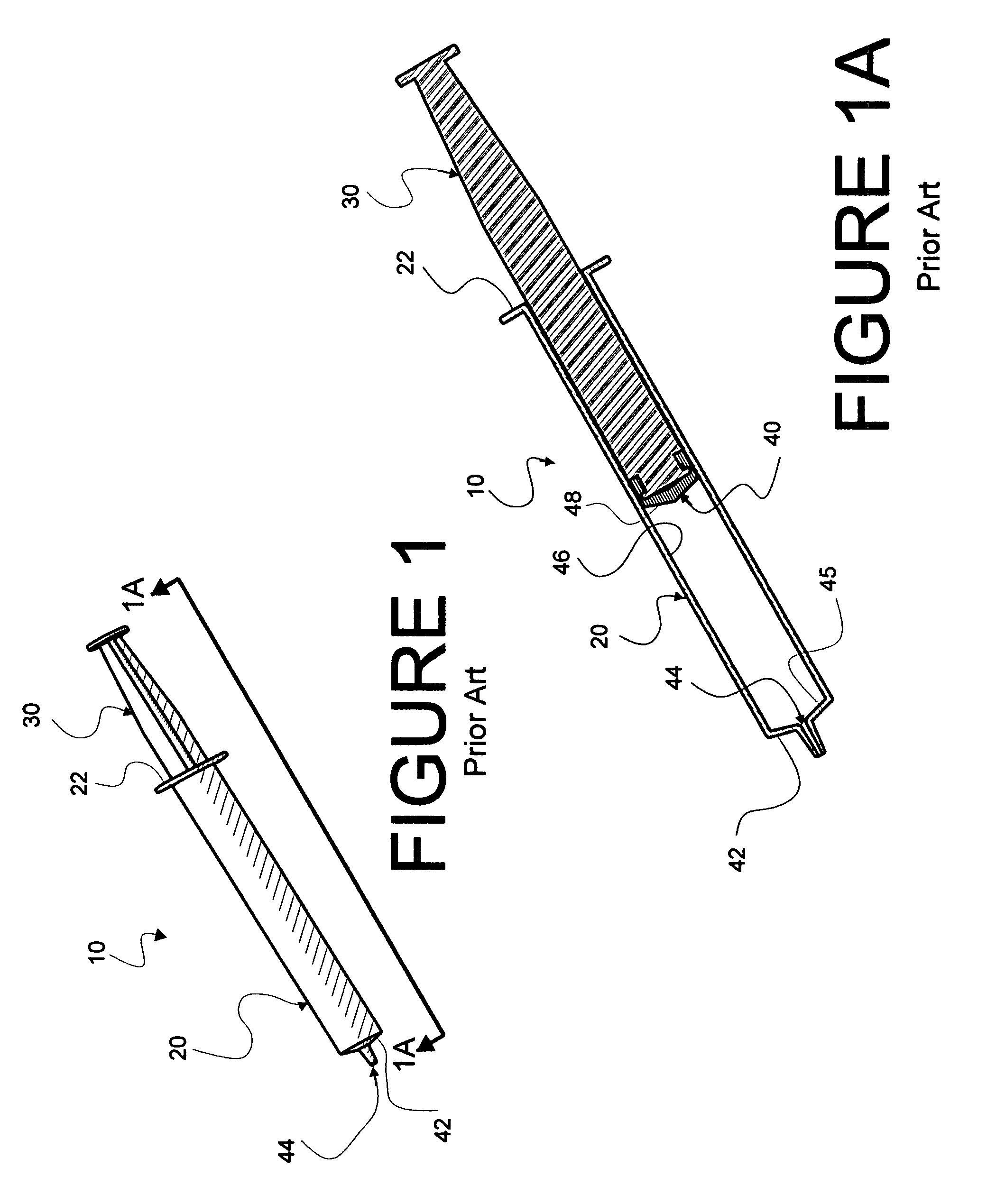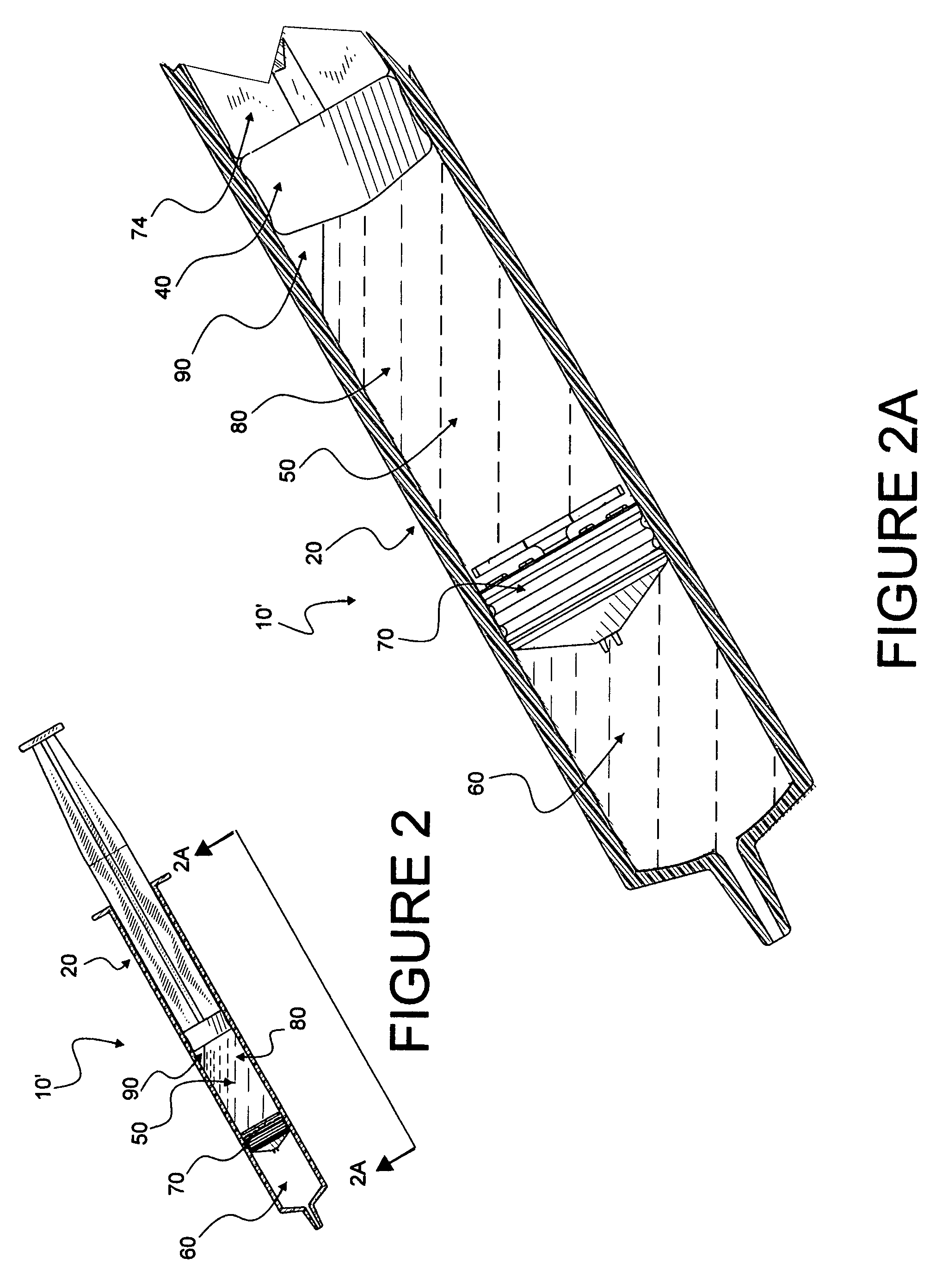Multi-chamber, sequentially dispensing syringe
a syringe and multi-chamber technology, applied in the field of multi-chamber syringes, can solve the problems of insufficient syringes, increased risk of medication errors, and insufficient syringe selection,
- Summary
- Abstract
- Description
- Claims
- Application Information
AI Technical Summary
Benefits of technology
Problems solved by technology
Method used
Image
Examples
Embodiment Construction
[0085]Reference is now made to embodiments illustrated in FIGS. 1-29 wherein like numerals are used to designate like parts throughout. In this description, primes of numbers are used to represent parts which are similar, but not identical to other parts having the same numbers.
[0086]Prior art syringes (as exemplified by syringe 10) in FIGS. 1 and 1A, are available from a large number of commercial companies worldwide. Such syringes typically comprise an elongated hollow syringe barrel 20 which is open at a proximal end 22 to receive a syringe plunger rod 30 and associated plunger tip 40 and closed at a distal end 42 about a fluid transmission orifice 44 through a distal face 45. Generally, barrel 20 is of substantially constant diameter (within tolerances allowed by manufacturing methods, such as by injection molding for barrels made from synthetic resinous materials or modeled from glass). Plunger tip 40 is compressible and sufficiently elastic when compressed to provide an effici...
PUM
 Login to View More
Login to View More Abstract
Description
Claims
Application Information
 Login to View More
Login to View More - R&D
- Intellectual Property
- Life Sciences
- Materials
- Tech Scout
- Unparalleled Data Quality
- Higher Quality Content
- 60% Fewer Hallucinations
Browse by: Latest US Patents, China's latest patents, Technical Efficacy Thesaurus, Application Domain, Technology Topic, Popular Technical Reports.
© 2025 PatSnap. All rights reserved.Legal|Privacy policy|Modern Slavery Act Transparency Statement|Sitemap|About US| Contact US: help@patsnap.com



